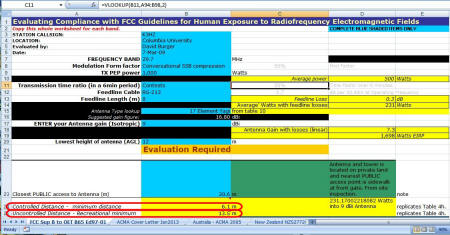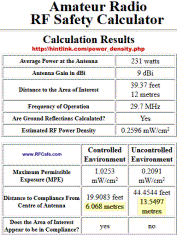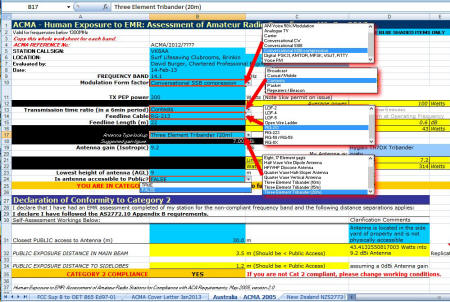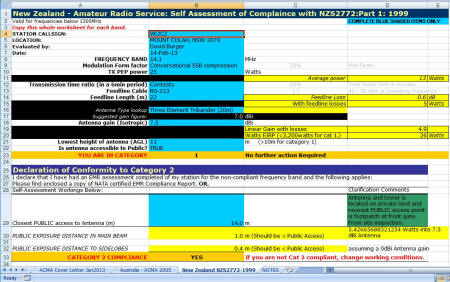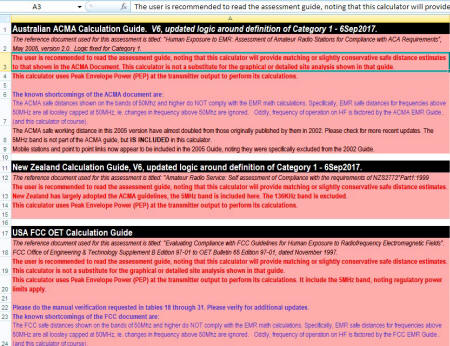Evaluating Compliance with FCC Guidelines for Human Exposure to Radiofrequency
Electromagnetic Fields
|
|
Featured Product Archive The inventions and products featured on these pages were chosen either for their uniqueness in the RF engineering realm, or are simply awesome (or ridiculous) enough to warrant an appearance. | 1 | 2 | 3 | 4 | 5 | 6 | 7 | 8 | 9 | 10 | 11 | 12 | 13 | 14 | 15 | 16 | 17 | 18 | 19 | 20 | 21 |
Says David, "It is based on electrical field theory math, which goes way beyond what conventional hams are capable of solving. Hence I figured I'd do my bit with my skills. I originally wrote it back in 2004, with minor tweaks since. It replicates all the FCC, ACMA and EMC safe working distances calculations around transmitting antennas. It is not a thesis, and simply replicates the published standards, which comprise hundreds of graphs. It is a spreadsheet, with no protections at all, and each worksheet is a wholly contained page, with visible formulas. The FCC rules don't quite align with EM theory, but the spreadsheet follows the FCC rules to the letter." Some nice user-friendly features are used like drop-down selection boxes. David Burger is graciously making it available free of charge and can be downloaded HERE. BTW, is K3HZ a great call sign or what?
Evaluating Compliance with FCC Guidelines for Human Exposure to Radiofrequency Electromagnetic Fields Worksheet Tab: "FCC Sup B to OET B65 Ed97-01" ----- Amateur Radio RF Safety Calculator
ACMA - Human Exposure to EMR: Assessment of Amateur Radio Compliance. V6, Sep2017 Worksheet Tab: "Australia - ACMA 2005"
New Zealand - Amateur Radio Service: Self Assessment of Compliance with NZS2772:Part 1: 1999 Worksheet Tab: "New Zealand NZS2772-1999"
NOTES (for all three worksheets) Worksheet Tab: "NOTES"
Posted July 31, 2018 |



